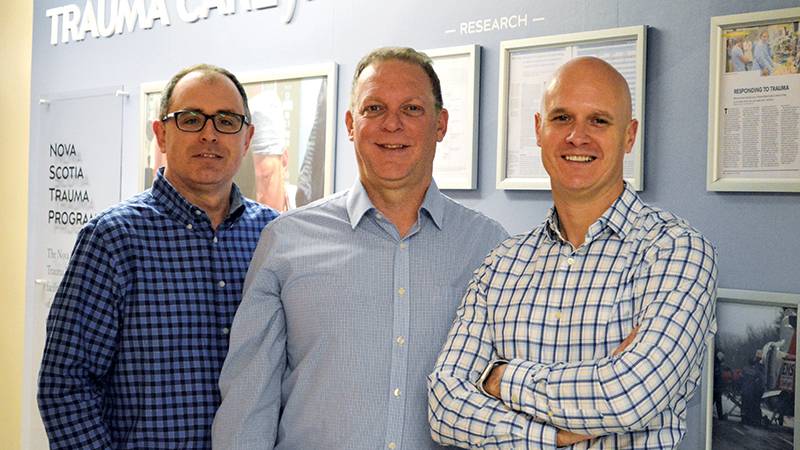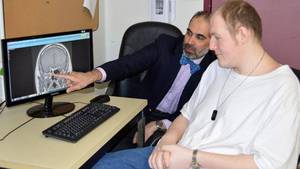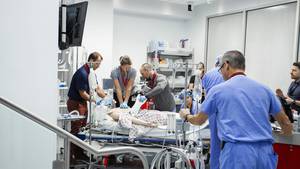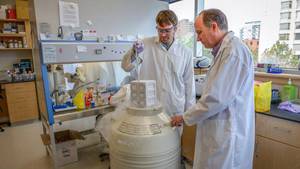Thousands of Nova Scotians experience traumatic injuries every year, from falls and motor vehicle collisions, to stabbings and gunshot wounds.
The dedicated team at Trauma Nova Scotia works hard to continuously improve and ensure consistencies in the quality of care people receive throughout the province. Based at the QEII Health Sciences Centre, the team also offers ongoing professional education, conducts research and finds effective ways to reduce the burden of trauma — on both patients and the healthcare system.
“Our program has a provincial scope with a goal of providing the best patient care possible, no matter where an injury occurs,” says Dr. Robert Green, the medical director of Trauma Nova Scotia.
Established in 1997, Trauma Nova Scotia takes a provincial approach to reducing the impact of traumatic injuries for Nova Scotians. In 2018, the program was formally integrated with Nova Scotia Health Authority’s Trauma Program, creating greater opportunity for collaboration throughout the province.
“Through this collaboration, we are continuously evolving to provide the best possible patient care and outcomes,” says Lewis Bedford, NSHA’s provincial director for trauma and urgent care.
Reducing the number of traumatic injuries and improving patient outcomes is essential. Trauma is the leading cause of death for Nova Scotians under the age of 45 — and the number of trauma-related incidences in the province is growing. Between 2008 and 2018, these types of injuries increased by more than six per cent.
Across the province, the team is working with clinicians in places like Yarmouth and Cape Breton to advance trauma care. The IWK Health Centre, for pediatric care, and Emergency Health Services are key partners in providing comprehensive, integrated trauma care, including pre-hospital care.
“It’s important for us to work together, across organizations and the province, to best facilitate care for patients,” says Dr. Green. “Having a collaborative trauma system is what saves lives.”
Part of this collaboration is the healthcare teams beyond the trauma room. Depending on the traumatic injury, a patient may need immediate surgery or be admitted to an ICU. As their condition improves, they often spend weeks as an inpatient before moving on to the QEII’s Rehabilitation and Arthritis Centre to regain strength and mobility or even relearn daily life activities. Some may need followup care for years to come.
“Working with our partners throughout the healthcare system ensures optimal quality of patient care throughout their journey,” says Lewis.
Since its inception more than two decades ago, Trauma Nova Scotia has developed and evolved the province’s trauma system through some of its core functions, such as maintaining the Trauma Registry, education and research.
“We really believe in using our data to inform practice,” says Dr. Green.
Nova Scotia is one of the country’s only provinces to have a population-based trauma database that captures information on major traumas from hospitals across the province. With 14,000 patients, the registry helps monitor and ensure the quality of the trauma system and provides data for research that informs trauma-related policies and clinical practice.
Using data from the registry, Dr. Green and his team can also recognize challenges, develop solutions and change practice. Through the data, they monitor critical events like the time between a patient’s arrival at the hospital and when they undergo a CT scan. Now, a trauma patient will receive a CT scan within 25 minutes of arriving at the QEII.
“The shorter that time is, the better the patient’s outcome,” says Dr. Green.
Education is another big part of what Trauma Nova Scotia does well. As many as 10 times a year, Dr. Green and his team teach a hands-on course to physicians, nurses and paramedics, mostly within their home towns across Nova Scotia. Using clinical-grade cadavers — one of the only organizations in North America to do so — they teach how to assess a patient’s condition, resuscitate, stabilize and arrange inter-facility transfers in the trauma system.
“We educate hundreds of people over the course of a year across the province,” says Dr. Green.
On Trauma Nova Scotia’s website, healthcare professionals can find information on a range of educational programs and watch instructional videos on procedures such as basic airway management and inserting a chest tube. New videos are continuously added with the goal of improving patient care.
“It’s a way clinicians across the province can keep updated on the latest procedures,” Dr. Green says.
In March 2020, the Trauma Association of Canada will hold its annual conference in Halifax. This will be the second time in four years that national and international clinicians and trauma system leaders have gathered in our province to share leading practices in trauma care and research.
For more information about trauma care in Nova Scotia, visit trauma-ns.com.








